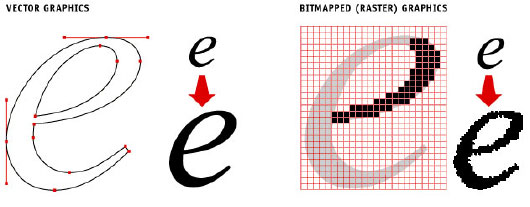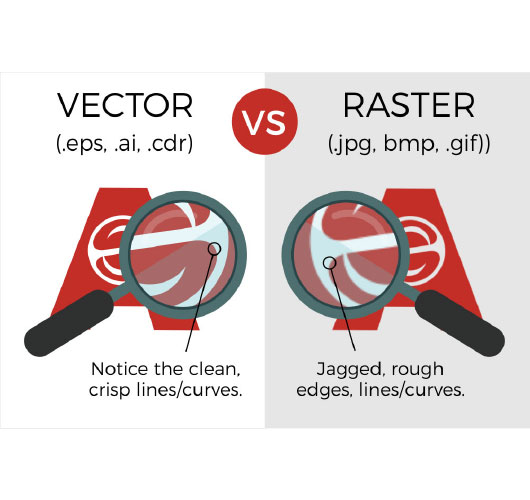At Signs & Print, we really go the extra mile to make sure your signs are of the highest possible quality. But if you cannot supply us with logos and graphics in a suitable format, there’s only so much we can do!
When we’re working with customer-supplied graphics, we often get asked the difference between vector images and bitmap images. So here, we’ve outlined the key features of each format and discussed some of the reasons why our printers prefer one type of image over the other.
What’s a bitmap (or raster) image?
Bitmap images – which are sometimes referred to as raster images – are made up of tiny, square-shaped pixels that can be arranged however you like in order to produce the desired image.
They are created using the principles of pointillism, an artistic technique in which the painter uses thousands of individual squares to form an image.
Most digital cameras and programmes will produce graphics in bitmap format. You’ll often see them saved with file extensions such as JPG, GIF and PNG (the most commonly used format across the web).
Bitmap graphics are easy to edit. The designer can use a professional photo editing programme such as Adobe Photoshop to edit or erase the colour of each pixel according to the result he or she wants to achieve. The downside to bitmap images, however, is that when you zoom in or enlarge the image, you’ll start to see the individual pixel squares, and this will affect the clarity of the overall image.
The size of the image will ultimately determine how ‘usable’ it is from a printing perspective. Images taken from online are usually low resolution bitmaps to make them load fast on websites but this makes them unsuitable for printing. Our designers often refer to the pixels-per-inch (ppi or dpi) calculation to see how it will respond to being enlarged or adjusted; the more pixels packed into an inch, the higher the quality of the image.
In some cases, it is possible to print signs and other collateral using bitmap images. But bitmap graphics very rarely work when applied to large format signs because they’re not of a high enough resolution to withstand the enlarging process unless being viewed from a distance. For the best results, we’ll ask you or your designer to produce a vector image of the same artwork instead.

What’s a vector image?
In a technical sense, vector images use geometrical formulas to represent your graphics. Unlike bitmap images, vector images are not based on pixels – they use mathematical rules to draw lines and curves that can be combined together to create the whole picture.
Designers use professional graphic design drawing programmes, like Adobe Illustrator, to create vector graphics.
The biggest advantage of using vector images in print is that they can be scaled up easily without losing their quality and clarity. The software will resize the image automatically by increasing the calculations, which means that the original appearance of the logo, text or illustration will be retained, even if the graphic is eventually used across large-scale PVC banners, printed boards and floor graphics.
Vector image file sizes tend to be smaller than bitmap files because a bitmap image has to store colour information for each and every pixel that forms the complete image. A Vector image only has to store the mathematical formulas that make up the image, which takes up less space. Sounds ideal, doesn’t it? Well, there are in fact a couple of downsides to using vector images. For example, they’re great for designs that use straightforward solid colours, but it’s tricky to achieve subtle colour gradients or shadows using professional graphic design drawing programmes, because each shape used within the design is assigned its own block colour.
Parts of the graphic can be rasterised if these kinds of effects need to be achieved, but as you’d expect, this will affect the resolution of the image when it’s time to enlarge it. Bitmaps are best used for images that need to have a wide range of colour gradients such as in most photographs.
Overall, though, vector images are more versatile than their bitmap counterparts – and that’s why we’ll prefer to work with them wherever possible. If you’re keen to invest in some new printed materials but are struggling to come up with a suitable vector graphic, remember that our team do offer a design service for an additional fee. They can develop an eye-catching and fully scalable design on your behalf if you wish, taking your existing branding and ideas into consideration to create a logo or illustration you can be proud of!









